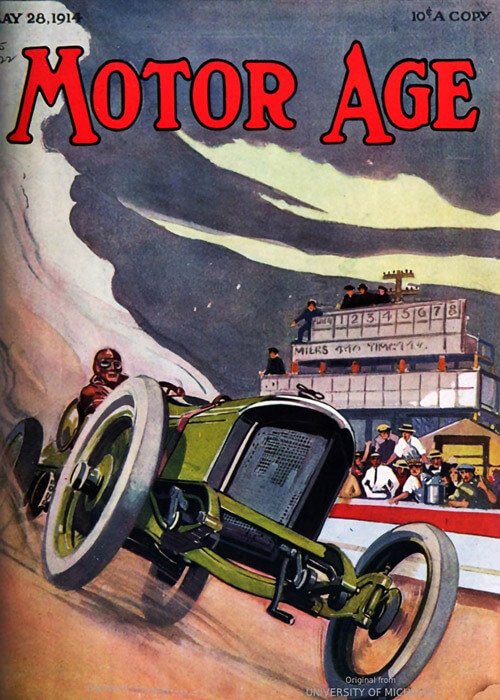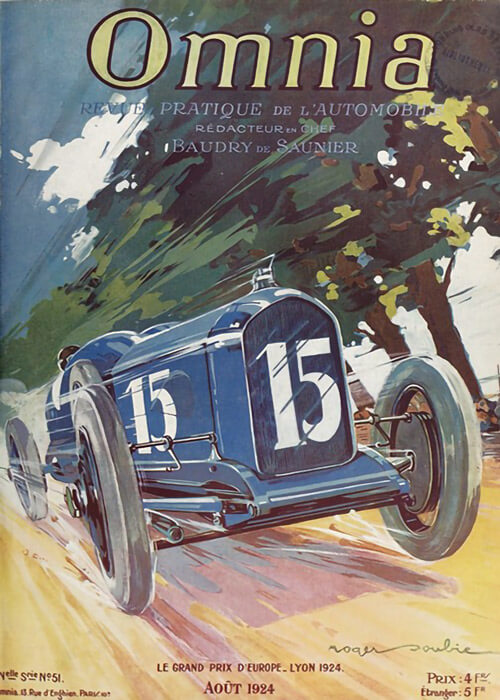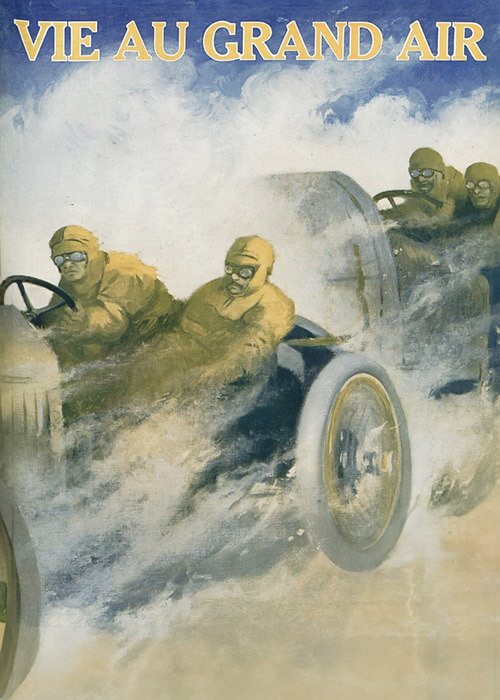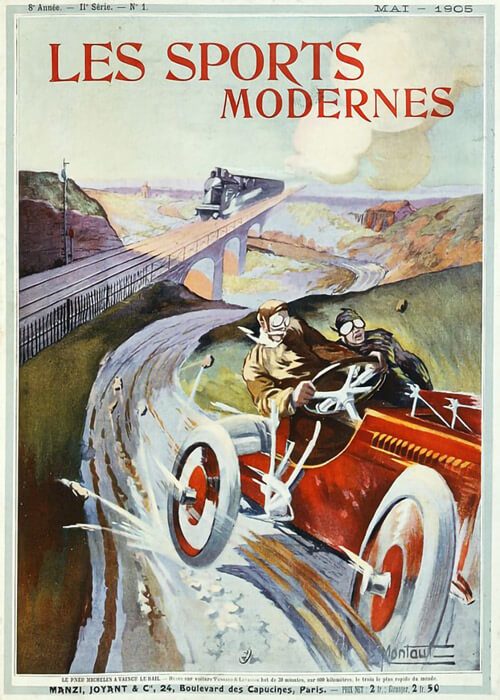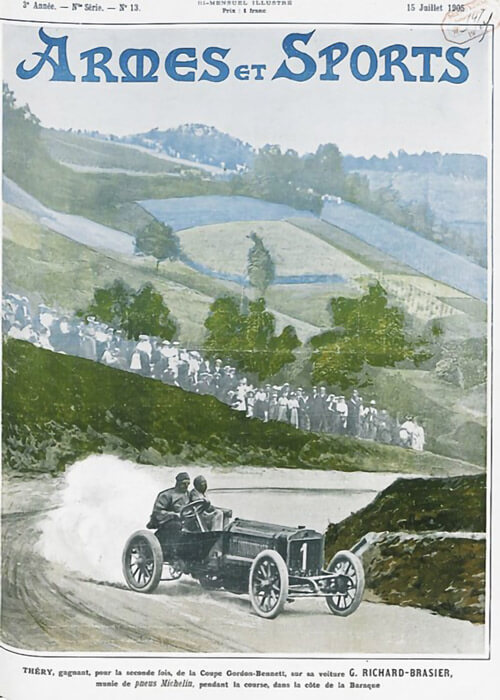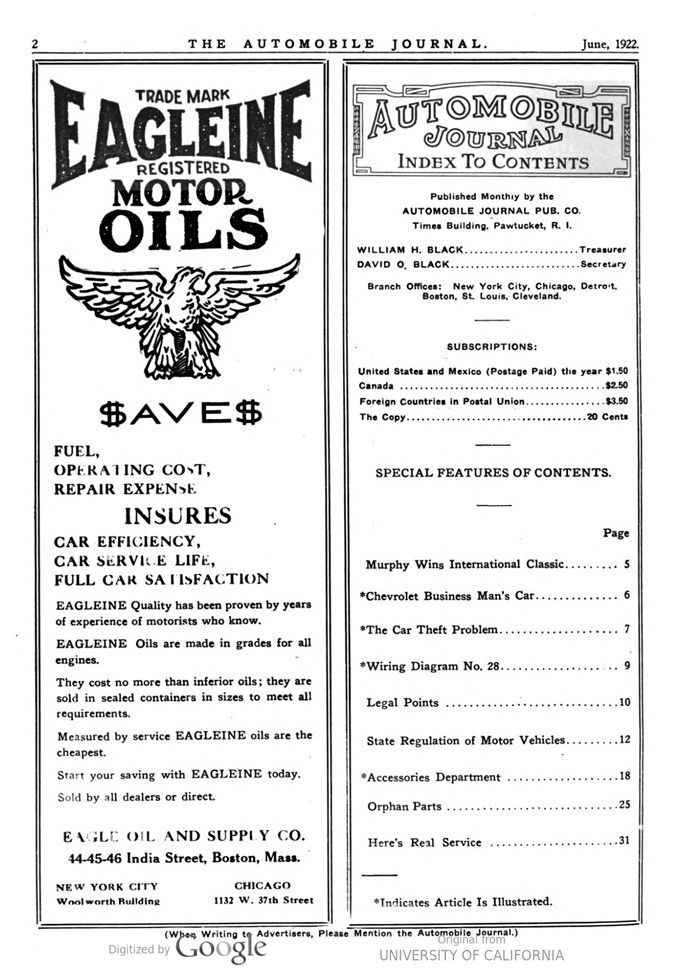



Text and jpegs by courtesy of hathitrust.org www.hathitrust.org, compiled by motorracinghistory.com
The Automobile Journal, Vol. LXIX (69), No. 10, June 1922
Murphy, Shattering DePalma’s Record, Wins Classic
Stopping Only for Tires and Fuel, Victor of Indianapolis Race Averages 94.48 Miles an Hour, Leading Field for Entire Distance.
LEADING from start to finish, Jimmy Murphy of Los Angeles, Cal., winner of the 1921 French Grand Prix, carved his name deeper in the hall of motor fame when he flashed his Murphy Special across the wire a winner of the 500-mile automobile race at the Indianapolis Speedway before a record-breaking crowd of 135.000 spectators.
Murphy smashed all records for the distance to smithereens, clipping more than 16 minutes off the best previous record. His time was 5:17:30:79, an average of 94.48 miles an hour, against the old record of 5:33:55:51, or 89.84 miles an hour, made by Ralph de Palma in 1915.
MURPHY did something which had never been accomplished before at the Indianapolis Speedway and, to the knowledge of racing experts, never before in a race of major importance. He shot into the lead at the start and never relinquished it during one instant of five hours of thrilling driving. He was the first away, first over the line at the completion of the first lap and was first over the wire when Captain Eddie Rickenbacker waved the flag for his victory.
The Los Angeles driver made only three stops during the entire 500 miles. He made his first stop at 185 miles, pulling up at the pits for two minutes to change all tires and replenish the fuel tanks. With a lead of about 10 miles, Murphy pulled into the pits for another tire change and for more gasoline and oil after he had traveled 368 miles. The assistance of his pit men was nothing short of marvelous. It took them just 28 seconds to change a right front tire and provide him with fuel enough to assure his finishing.
While major honors went to Murphy, Harry Hartz, also of Los Angeles, who finished second, drove a remarkable race in a Duesenberg. He jumped into second place 60 miles after the start and held it throughout, always making a desperate fight to catch Murphy. Hartz’s time was 5:20:34:59, an average of 93.54 miles per hour, which also was far in advance of the record.
Eddie Hearne, a veteran racer, piloted a French Ballot car to third place in 5:22:26:08, for an average of 93.04 miles an hour, while Ralph de Palma, one of the favorites, also driving a Duesenberg, was fourth in 5:31:04:65, an average of 90.61 miles an hour. Ora Haibe was fifth in 5:31:13:45, an average of 90.56 miles an hour. Jerry Wonderlich was sixth in 5:37:52:34, an average of 88.79 miles I. P. Fetterman finished seventh in 5:40:55:44, an average of 85.69 miles an hour. Tom Alley was ninth in 5:57:34:13, an average of 83.89. Joe Thomas finished 10th in 6:05:01:47, an average of 82.19.
HOW THEY FINISHED IN 500-MILE AUTO RACE CLASSIC.
Driver and Car. Time.
J. Murphy, Murphy Special. * 5:17:30:79
H. Hartz, Duesenberg. 5:20:34:59
E. Hearne, Ballot. 5:22:26:06
R. de Palma, Duesenberg. 5:31:04:65
O. Haibe, Duesenberg. 5:31:13:45
J. Wonderlich, Duesenberg. 5:37:52:34
I. P. Fetterman, Duesenberg. 5:40:55:44
I. Vail, Disteel-Duesenberg. 5:50:07:42
T. Alley, Monroe. 5:57:34:13
J. Thomas, Duesenberg. 6:05:01:47
* New record. Old record, 5:33:55:51, made by Ralph de Palma in 1915. Winner’s average, 94.48 miles per hour. an hour.
Confusion among the judges and timers resulted in the erroneous announcement shortly before the 200th mile that Murphy had lost the lead and Hartz had gone into first place. Signals were passed to the drivers that Hartz was leading and even Murphy thought the checking was correct, as he began to force a much faster race in his fight to regain the lead. He jumped the average of 93.52 for 200 miles to 94.41 for 275 miles and then again to 94.54 for 300 miles.
As winner of the event Murphy will receive approximately $35,000. Twenty thousand dollars was awarded first place and $8000 as lap prize money. In addition, automobile accessory companies provided cash prizes, which will bring Murphy’s total to the $35,000 mark. Hartz got $10,000 for finishing second; Hearne got $5000; De Palma, in fourth place, $3500; Haibe, $3000; Wonderlich, $2200; Fetterman, $1800; Vail, $1600; Alley, $1500, and Thomas, $1400.
Barney Oldfield, a retired star of the racing world, with the customary cigar in the corner of his mouth, paced the field for the first lap, bringing them to a flying start at a speed of about 70 miles an hour. Then Murphy stepped out in front, leading for the first lap, with Leon Duray and then Ralph de Palma.
Howard Wilcox of Indianapolis was the first driver forced out, his car breaking a valve spring after traveling 172 miles. Jules Ellingboe furnished the first big thrill when he threw a right rear wheel on the south turn. The speeding machine turned completely around on the track and crashed into a concrete retaining wall. Ellingboe and his mechanism remained in the car and neither was injured.
Wilbur D’Alene furnished a second thrill when his car caught fire on the back stretch. D’Alene and his mechanician jumped and escaped with a slight singing. The fire was extinguished but the car was eliminated from the race. This was D’Alene’s second narrow escape from death from fire. His previous experience was at the Chicago Speedway in 1917 when his machine caught fire and his mechanic was burned to death. D’Alene escaped with slight burns.
Tommy Milton, 1921 speed champion and winner of the 500-mile race here last year, was among the drivers forced out of the race early. A leaking gas line caused his withdrawal. Jules Goux of France went out of the contest on the 16th mile with a broken axle. He was among the leaders when the axle gave way.
Leon Duray, claimant of the 1921 dirt track championship and driving his first speedway race, gave Murphy a terrific battle early in the contest, but was forced out at 235 miles with a broken axle. Peter de Paolo, nephew of Ralph de Palma, was in the third smash-up of the day, his car hitting the outside retaining wall, skidding more than 100 feet and landing at the bottom of the track. The driver was uninjured, but the car was unable to proceed.
The pluck of W. Douglas Hawkes of London, England, driving an English car, won the admiration of the crowd. Outclassed by many miles in speed, the machine nevertheless showed wonderful endurance. It was still running when the 10th car ended its journey and the race was officially closed. Hawkes was about 30 miles behind the last to finish.
